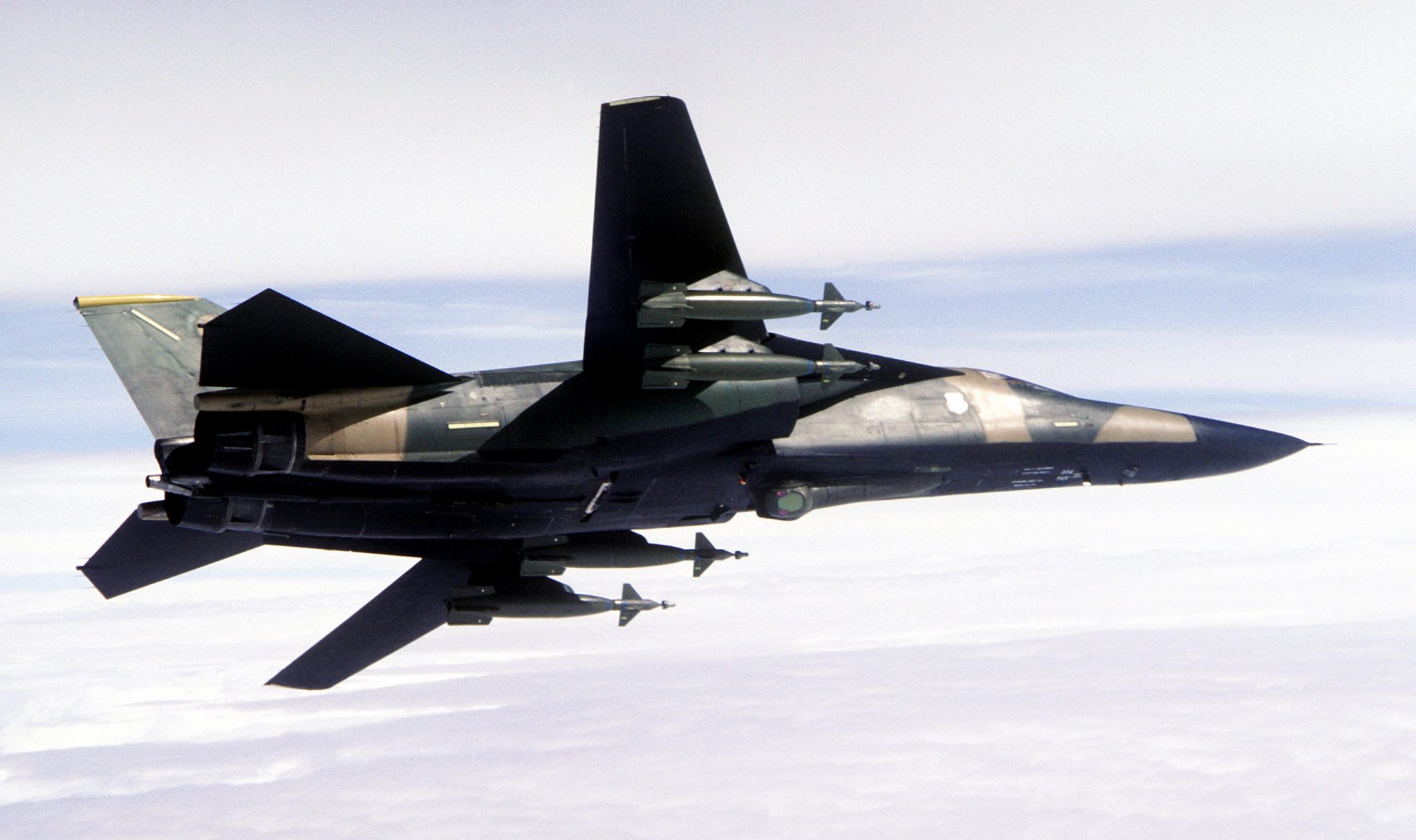That Nose! That Beautiful Magical Nose!
When the General Dynamics F-111A entered the United States Air Force’s (USAF) initial operational service in 1967, it was capable of doing things and going places that other bombers could only dream about. A large part of the jet’s capability came from its revolutionary terrain-following radar (TFR) system, which allowed the jet to fly low and fast. Of course, the Aardvark (the F-111 never received an official name, but Aardvark stuck) also had other revolutionary characteristics (like the first operational swing wings), but the training film we’re highlighting in this piece does an exceptionally good job of explaining how the TFR system did its critically important job. Thanks to YouTuber PeriscopeFilm for uploading the video.
A Tough Time the First Time Out
The first use of the F-111 in combat was during the Vietnam War. In March of 1968, a detachment of six F-111As was sent to Southeast Asia under the Combat Lancer program. Three of the six aircraft were lost during just over a month in-country. It was later determined that a design fault in the horizontal stabilizer had caused the losses, which delayed the full operational use of the jet until 1971. In 1972, the F-111 returned to Southeast Asia and racked up 4,000 combat sorties with only six losses directly attributable to enemy action.

Dropping Them In the X Ring
Throughout the remainder of the Vark’s service life, it was a key player in nearly all military operations. When, in 1986, it became necessary to strike Libya, the F-111 was the only jet capable of pulling off the long-range precision strikes needed to execute the Air Force’s tasking for Operation El Dorado Canyon.
During Operation Desert Storm in 1991, the F-111Fs that dropped 80% of the laser-guided bombs were developed from those A models that had first worn Air Force colors twenty years earlier. But after Desert Storm, the F-111s didn’t stick around for long. Just five years later, the Air Force retired its last bomber, the Varks, and the dedicated electronic attack EF-111 Spark Varks followed a couple of years after that.


We had a large copy of this photo hanging in the 494 TFS Maintenance Unit at RAF Lakenheath, UK. The photo came home with me and was donated to he 8th Air Force at Barksdale AFB, LA about 1998 – 2000.
I’m not sure that is correct. The RAAF retired them much later than 1996.